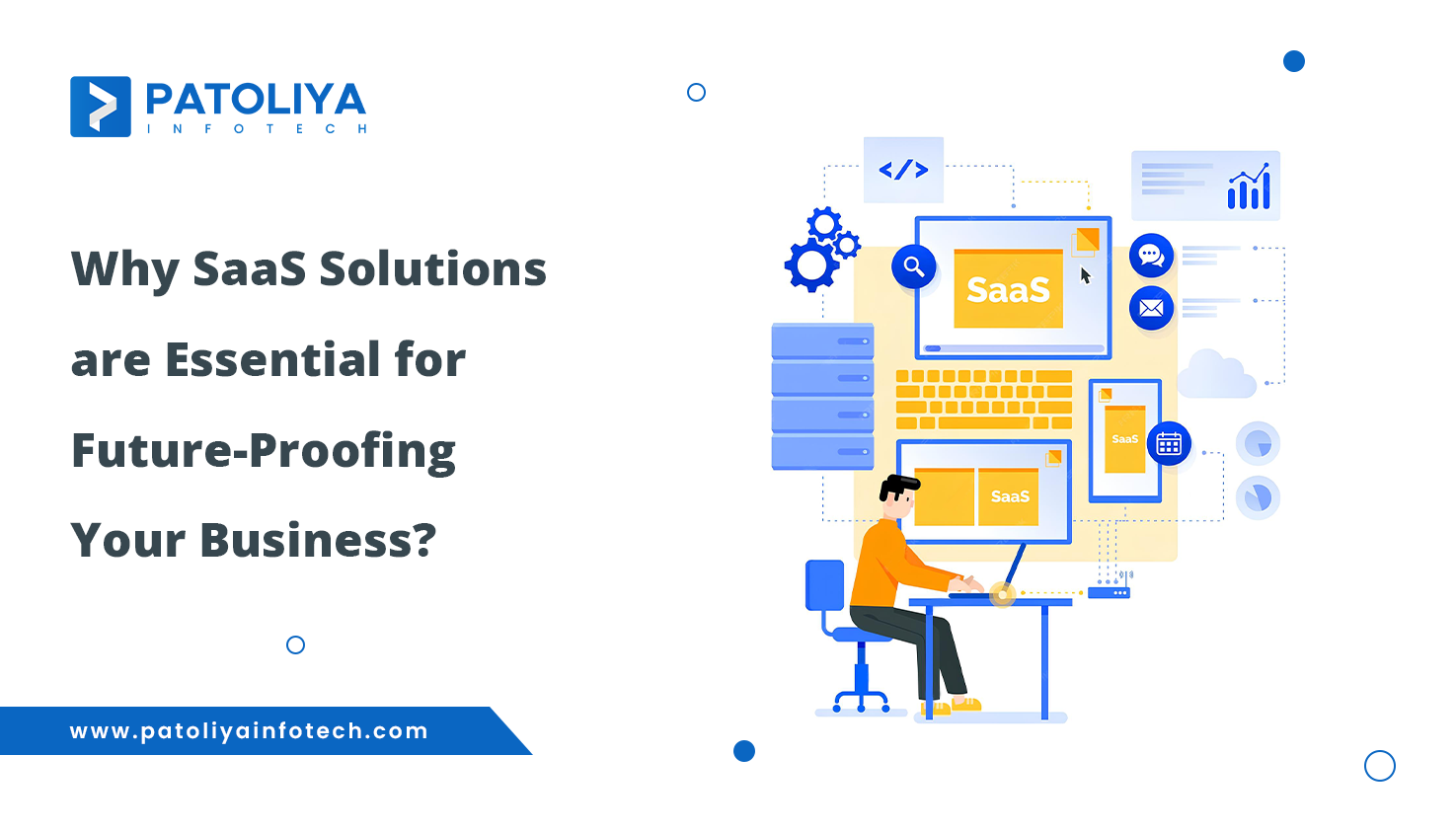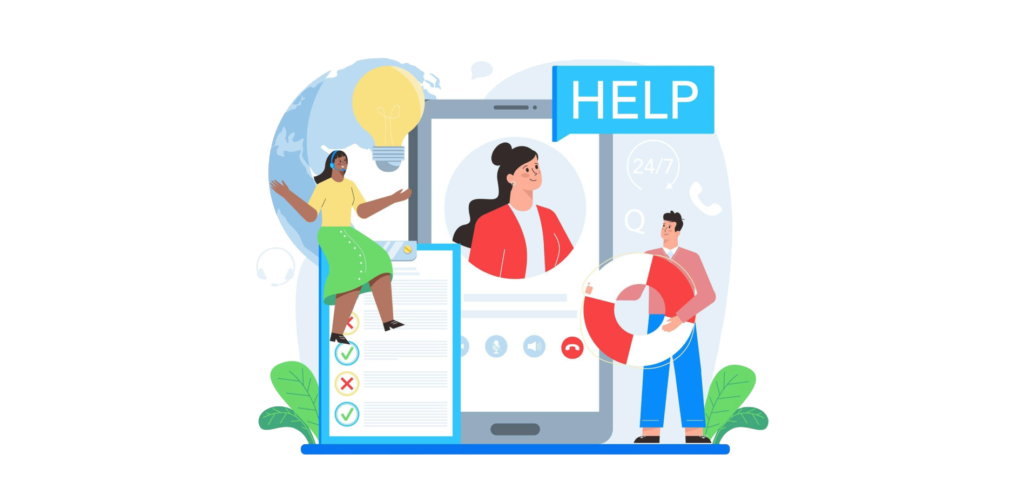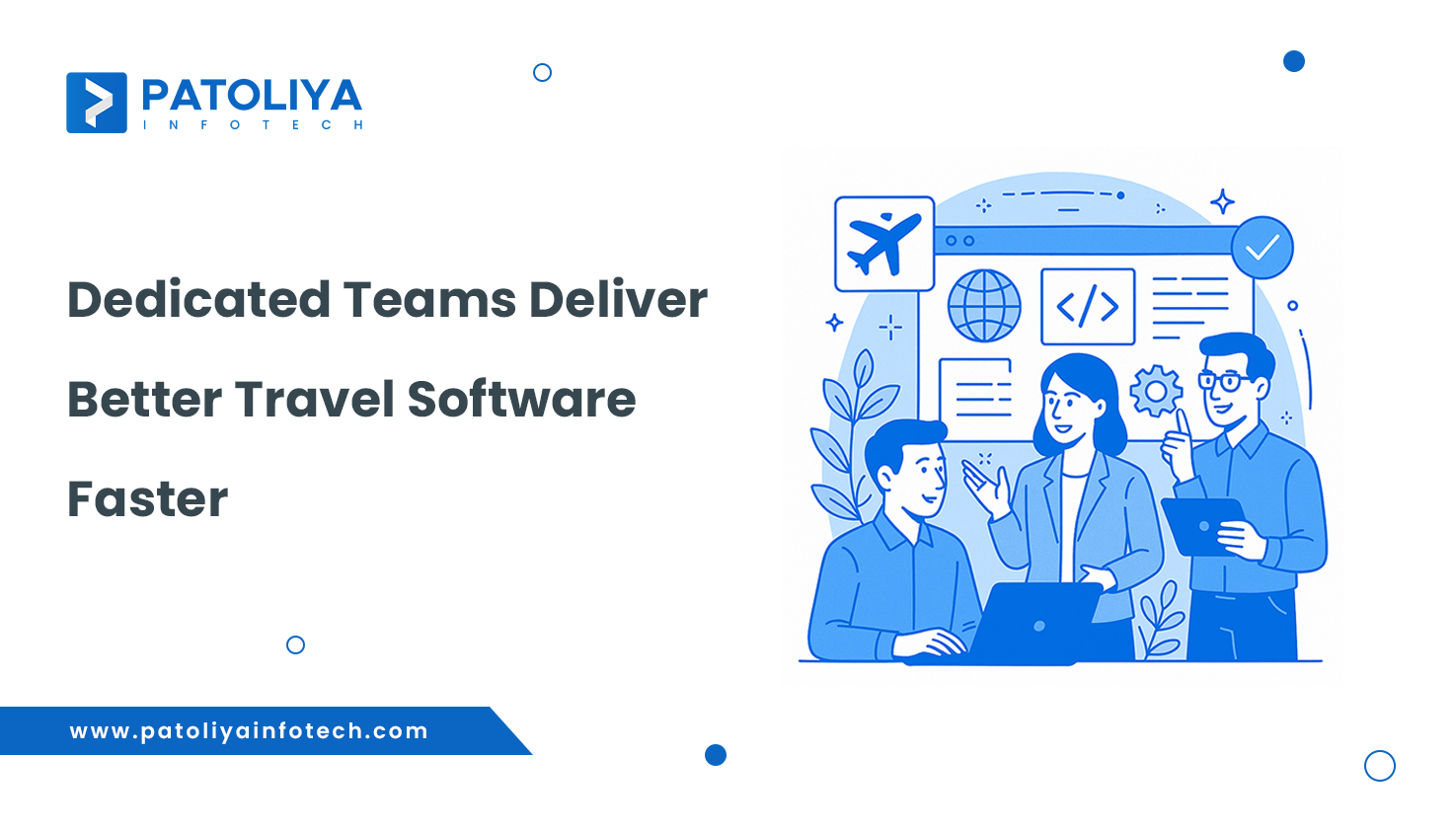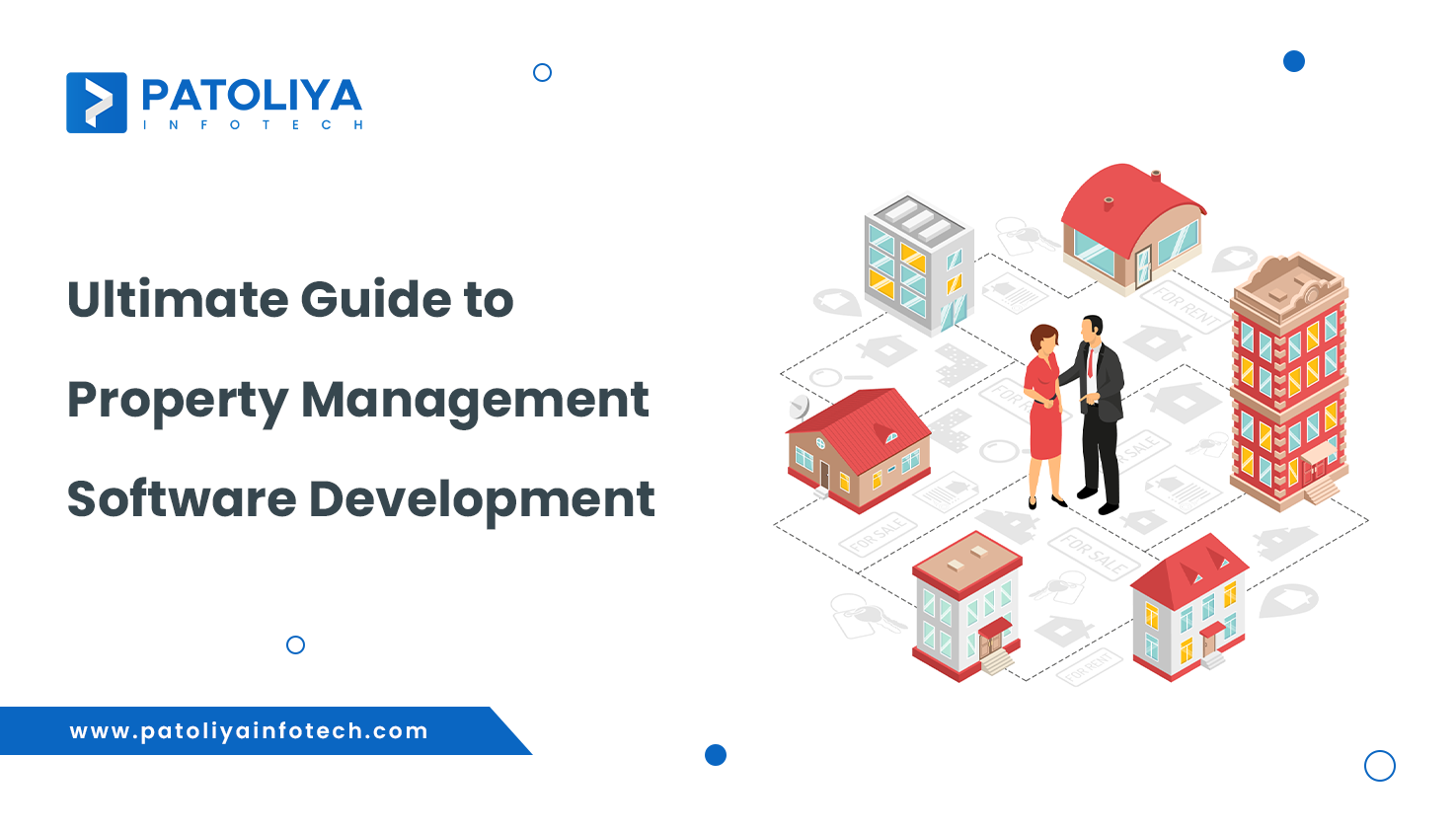How SaaS Solutions Ease Growth for Modern Businesses?

Table of Contents
Software-as-a-service, or SaaS, is emerging as an innovative option for companies of all sizes. SaaS refers to cloud-based software that is maintained and supplied by outside parties, allowing businesses to access systems online without depending on traditional infrastructure. SaaS covers a broad range of applications that businesses require these days, such as CRM systems and accounting software.
What differentiates SaaS? It mostly provides businesses with the chance to save expenses, optimize workflows, and preserve adaptability in a constantly evolving industry. Traditional methods of purchasing software, setting it up on local servers, and managing upgrades are costly and time-consuming. SaaS facilitates the delivery of a subscription-based model that allows businesses to pay for just the services they use and does away with the need for complicated infrastructure.
Apart from cost reductions, SaaS provides unmatched adaptability. No matter how widely distributed your personnel are—in one office or across the globe—SaaS solutions provide access from any place, promoting efficiency and cooperation. Whether they are expanding quickly or adjusting to changes in the market, businesses may also respond swiftly to change and make the required upward or downward adjustments.
Cost Efficiency
The low cost of SaaS (Software-as-a-Service) solutions is one of its big advantages. Traditional software approaches can be major financial barriers including upfront licensing costs, hardware purchases, and ongoing maintenance costs SaaS reverses this trend by providing a reliable, large, and cost-effective way allowing companies to access the equipment they want. How to do it:
Elimination of Upfront Costs
Under the traditional paradigm, companies would need to purchase expensive software licenses and make investments in physical infrastructure to support these apps. This necessitated a substantial initial capital expenditure, which sometimes placed a strain on the finances of organizations, especially small and mid-sized businesses. SaaS eliminates this burden. Because SaaS systems are hosted in the cloud and are managed by the service provider, businesses do not need to pay exorbitant license fees or make upfront expenditures for physical equipment.
SaaS is now more accessible to smaller companies, while larger companies may make more strategic investments by concentrating their efforts on developing new products, marketing campaigns, and business plans rather than IT infrastructure.
Flexible Payment Models
SaaS’s customizable payment plans are another important benefit. Companies often pay a subscription fee, which can be set monthly, quarterly, or annually, rather than a large upfront fee. Because subscription-based pricing provides companies with greater financial flexibility, they can manage their revenues more effectively.
Additionally, SaaS providers often offer different pricing tiers, allowing companies to choose the package that best fits their needs and upgrade as they expand as their team grows or their software needs change as a small business, for example. They can start with a basic program and gradually move to more advanced options By ensuring that companies only pay for the goods and services they use, this "pay as they go" system helps them avoid that they will spend too much money on useless software products.
Reduced Maintenance and Operational Costs
SaaS lowers the regular expenses related to software maintenance in addition to removing the initial outlay. Traditional software frequently needs frequent patches, upgrades, and troubleshooting—all of which demand time and IT staff. Your program will always function properly with little effort on your side thanks to SaaS providers that take care of these chores for you. Because companies no longer need to recruit sizable IT teams or make significant investments to manage their software infrastructure, operating expenses are reduced.
Companies may also save money by staying current with the newest features and security improvements without experiencing downtime or extra upgrade costs thanks to SaaS suppliers' automated upgrades.
Scalability and Flexibility
Remaining competitive requires scalability and adaptability. Businesses want technology that can adapt as markets and consumer expectations change. Here is where Software-as-a-Service (SaaS) excels, providing the flexibility required to prosper in changing settings. Let's examine how SaaS solutions offer unmatched flexibility and scalability:
On-Demand Capacity Adjustments
The ability to rapidly modify capacity to your company's demands is one of SaaS's most alluring characteristics. SaaS enables you to quickly scale down at a slower time or increase or decrease users, storage, and features in response to an unexpected spike in demand. Because of this "on-demand" feature, you're never constrained by a strict contract that uses up too many resources.
For instance, a seasonal company might reduce operations at off-peak times to save money, while a rising startup can easily expand its software capabilities as its staff grows. By ensuring that companies only pay for what they require when they require it, this degree of control improves the effectiveness and economy of resource management.
Adapting to Market Changes

Companies need to adapt quickly to their ever-changing business environment to compete. SaaS solutions and deliver the ability to quickly adapt to changes in the market. SaaS systems provide the resources and scalability to meet changing needs, whether you’re launching new products, expanding geographically, or dealing with unexpected obstacles.
SaaS allows for quick and easy modifications, whereas traditional software sometimes takes a long time and effort to upgrade or modify. It only takes a few clicks to add new features, upgrades, or modules—no complicated installs or expensive delays are required. This keeps companies flexible and prepared to take advantage of new possibilities or take on fresh difficulties.
Accessibility and Convenience
Remote Work Enablement
With the increasing popularity of remote work, businesses now operate differently, and SaaS is leading this shift. Because SaaS systems are cloud-based, employees can be accessed from any location with Internet connectivity, enabling and augmenting remote work. SaaS ensures that your team has the information and tools they need at their fingertips, whether they work remotely, on the move, or at different times.
This is especially helpful considering that lean systems are common in today’s offices. SaaS enables companies to hire the world’s top talent and preserve productivity and productivity by removing the need for employees to be physically present in the office.
Anytime, Anywhere Access
Your business doesn't cease when the workday is over when you use SaaS. SaaS solutions provide anytime, anywhere access for tasks like managing an urgent problem over the weekend, working with multinational partners, or viewing important reports after hours. This degree of ease is revolutionary for companies that must continue to be responsive and flexible even beyond regular business hours.
Employees are no longer constrained by office equipment or devices; they may use SaaS apps on laptops, tablets, or cell phones. This enables greater work-life balance, more flexible work schedules, and quicker reaction times in urgent situations—all of which enhance performance in general.
Enhanced Collaboration
SaaS solutions are now important to optimize the performance of enterprise members, regardless of their geographic location. No matter how dispersed your employees are across offices, cities, and even continents, SaaS solutions make it easier than ever to collaborate in real-time. Here are some ways SaaS strengthens teamwork:
Breaking Geographical Barriers
Teams no longer need to be in the same room or even at the same time to work together efficiently. Geographical limitations are eliminated with SaaS systems, enabling staff members to work together almost anywhere. Team members may communicate through video conferencing or cloud-based apps, work together on projects, and access shared documents from any location.
Bringing together talent from all around the world and facilitating easy collaboration across multinational teams, has completely changed the way companies function. Whether working on a project with coworkers in various nations or communicating with clients and partners on other continents, SaaS keeps everyone in sync in real-time.
Tools for Remote Teams
SaaS is the foundation of effective collaboration for distant teams. SaaS solutions provide remote teams with what they need to remain coordinated, productive, and organized, including communication tools and project management platforms. Employees may assign projects, have virtual meetings, communicate updates, and monitor progress using tools like Microsoft Teams, Slack, and Trello—all inside a single, user-friendly platform.
Even distant workers will feel like they belong to the team because of this improved connectedness, which promotes great cooperation and collaboration despite geographical distance. SaaS solutions additionally guarantee that vital data and resources are always accessible, lowering the possibility of misunderstandings and assisting teams in more effectively meeting deadlines.
Security and Compliance
Compliance and security are important for any company. Software-as-a-service (SaaS) solutions offer strong operational and collaborative tools, as well as streamlined compliance procedures and strong security measures. Here's how SaaS helps companies in navigating the complex security and regulatory landscape:
Managed Security Features
The platform's integrated managed security capabilities are one of SaaS's most notable benefits. SaaS companies place a high priority on security at every stage, in contrast to conventional software, which necessitates significant investments from organizations in their security infrastructure. This includes tools like intrusion detection systems, frequent security upgrades, and data encryption that are all intended to shield your private data from online attacks.
SaaS companies also have dedicated security teams that monitor systems 24/7 to ensure that vulnerabilities are promptly and efficiently corrected. Businesses may now focus on their core skills because their data is in capable hands. Moreover, SaaS's cloud-based design makes automatic backups and disaster recovery plans possible, providing you with the guarantee that your data will be quickly restored in the event of an emergency.
Regulatory Compliance Simplified
It may be challenging for businesses operating in highly regulated sectors like banking, healthcare, and data security to navigate regulatory compliance. Fortunately, organizational procedures are streamlined by the fact that many SaaS vendors are built with compliance in mind.
SaaS systems frequently provide capabilities that assist in guaranteeing compliance with laws like PCI DSS, GDPR, and HIPAA. Data governance tools, audit logs, and user access restrictions are among the features that help companies comply with legal obligations without requiring a lot of human tracking.
A lot of SaaS companies also go through stringent third-party audits, and certifications confirm that their compliance practices are sound. This lowers the workload for internal teams, allowing them to concentrate on strategy rather than compliance monitoring, and it also provides organizations confidence in their supplier choice.
Rapid Deployment and Time-to-Value
Quick solution implementation and outcome production might be a significant competitive advantage. SaaS (Software-as-a-Service) solutions are designed to reduce time-to-value and speed up deployment, allowing businesses to rapidly get up and running. SaaS speeds up integration and market readiness in the following ways:
Quick Integration and Setup
SaaS's ease of setup and integration is one of its attractive qualities. SaaS apps may be accessible and used virtually instantly, in contrast to traditional software installs that may need weeks or even months to establish. Businesses may quickly deploy the tools they require without interfering with everyday operations because there are no complicated hardware requirements or drawn-out installation procedures.
Teams can get started with little training thanks to the majority of SaaS providers' user-friendly interfaces and simple onboarding procedures. Furthermore, a lot of SaaS systems provide pre-built interfaces for well-known apps, which enables companies to easily integrate their current tools and optimize processes. This means that instead of battling technical issues, your staff can concentrate on utilizing the product efficiently.
Accelerated Time to Market
Being able to launch goods and services fast might help a company stand out from the competition at a time when speed is essential. By giving teams instant access to robust tools that improve productivity and communication, SaaS solutions speed up time to market.
For example, inside a single ecosystem, development teams can use SaaS services for communication, project management, and testing. Businesses may change course and adjust in response to market input because of this integrated approach's quicker iterations and more efficient procedures. Additionally, companies may benefit from the newest features and developments without having to wait for protracted upgrade cycles because SaaS providers are always updating and improving their programs.
Ongoing Innovation and Updates

To keep ahead of the competition, businesses need to use solutions that are not just effective but also evolving continuously. SaaS (Software-as-a-Service) solutions excel in this area, offering rapid updates and ongoing innovation that help companies remain competitive and flexible in response to changing market conditions. SaaS ensures that businesses benefit from ongoing enhancements in the following ways:
Continuous Feature Enhancements
SaaS's dedication to ongoing feature improvements is one of its most notable advantages. SaaS apps are often updated with new features and functionalities, in contrast to conventional software, which usually needs significant updates that may be expensive and disruptive. Users will always have access to the newest tools and advancements without having to deal with complicated installs or downtime thanks to these automated rollouts.
Businesses are able to quickly seize new possibilities and adjust to shifting demands because of this ongoing evolution. SaaS solutions are made to expand your company, increasing efficiency and effectiveness over time, whether that means integrating cutting-edge analytics capabilities, boosting user experience, or integrating with new technologies.
Staying Competitive with Regular Updates
The difference between success and stagnation can be found in having access to the newest features. Frequent upgrades guarantee that companies have access to modern tools that help them remain competitive and relevant. SaaS companies frequently solicit user feedback to guide their development roadmaps, giving priority to improvements that directly address market trends and client demands.
With this strategy, companies that use SaaS not only gain from increased capability but are also in a better position to satisfy their clients' changing needs. Businesses may reinvent their services, improve client experiences, and keep a competitive advantage in their particular sectors by keeping up with the most recent software capabilities.
User Experience and Support
Software-as-a-service (SaaS) solutions were developed with the end user in mind. SaaS providers guarantee that businesses may optimize their software investment and accomplish their objectives by emphasizing user-friendly interfaces and strong customer service. Here's how these components work together to improve the user experience as a whole:
Intuitive Interfaces for Users
The user-friendly interfaces of successful SaaS apps are one of their distinguishing features. Because of their user-friendly design, these platforms reduce the learning curve and enable staff members to swiftly and efficiently embrace new products. SaaS solutions enable customers to concentrate on their jobs without being distracted by complicated procedures or perplexing layouts because of their logical workflows, simple navigation, and aesthetically pleasing designs. Want to know how exceptional SaaS UX can boost your business?
In diverse workplaces where team members may possess differing degrees of technical competence, this focus on user experience is especially important. Everyone may use the program efficiently thanks to a straightforward design, even less tech-savvy users and seasoned pros. As a consequence, companies may increase customer happiness, save training time, and increase productivity.
Customer Support and Resources
Customer service and resources are both important parts of SaaS solutions as even the most user-friendly software may have problems. Prominent SaaS companies make sure that consumers can obtain help when they need it most by providing extensive support options including live chat, email, and phone support. Teams can swiftly overcome challenges and drastically save downtime with this reactivity.
A multitude of self-service tools, including knowledge bases, tutorials, and webinars, are also offered by many SaaS systems, enabling customers to solve problems on their own. In addition to improving the user experience, these tools help team members feel more confident and in control of the project.
Conclusion
Numerous advantages of Software-as-a-Service (SaaS), such as cost-effectiveness, scalability, and improved collaboration, may drastically change how businesses operate. With capabilities like speedy deployment, continuous innovation, and strong support, SaaS enables businesses to maximize productivity and swiftly adjust to changes in the market. SaaS is a crucial element for success in the current competitive environment as companies will continue to depend on digital solutions, which will increase demand for adaptable and user-friendly software.
With the development of automation and artificial intelligence, SaaS seems to have a bright future ahead of it, with its possibilities being further expanded. SaaS solutions are positioned as a vital ally for businesses looking to prosper in a changing business climate, as the necessity for easily available and collaborative tools will increase as remote and hybrid work patterns grow more common. By taking advantage of SaaS, companies may improve their operations now while simultaneously establishing the foundation for long-term expansion and innovation in the digital world.



